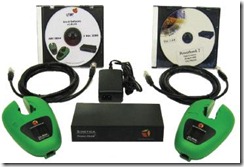I’ve been writing about cloud computing more as cloud computings are more efficient using less resources. Here is IBM’s latest press release that demonstrates cloud computing is green.
The data center uses advanced software virtualization technologies that enable access to information and services from any device with extremely high levels of availability and quality of experience. The facility aggressively conserves energy resources; saving cost and speeding services deployment through a smart management approach that links equipment, building systems and data center operations.
“I thank IBM for its continued commitment to North Carolina. This facility promises to be one of IBM's greenest data centers in the world, proving once again that green is gold for North Carolina,” Gov. Bev Perdue said. “Growing North Carolina’s green economy plays a critical role in my mission to create jobs and to ensure our state’s economy is poised to be globally competitive in the long term.”
As I’ve discussed the ideas working with University of Missouri, IBM has taken the same approach working with North Carolina Universities.
The data center is showcasing a cloud computing solution in partnership with North Carolina Central University (NCCU) and NC State University that enables Hillside New Tech High School students in Durham, NC to access educational materials and software applications for the classroom over the Internet from the high school’s computer lab, as well as from any networked device. This means that the learning environment can be extended to nearly any place at any time without the restrictions many schools face such as limited support, hardware resources and lack of access. The Hillside outreach project with NCCU, using cloud computing as a vehicle in support of education, is one of several such K-12 projects that IBM supports. The new data center also currently hosts IBM’s global web site, ibm.com, and the IT operations of strategic outsourcing clients such as the United States Golf Association (USGA).
The green features are listed here.
Smarter data center management: Thousands of sensors, connecting IT equipment, data center and building automation systems, provide data that can be analyzed to plan future capacity planning, conserve energy and maintain operations in the event of a power outage.- Energy efficiency: The data center uses half the energy cost to operate compared to data centers of similar size by taking advantage of free cooling – using the outside air to cool the data center. Intelligent systems use sensors to continuously read temperature and relative humidity throughout the data center and dynamically adjust cooling in response to changes in demand.
- Cloud computing capability: Support for cloud computing workloads allow clients to use only the resources necessary to support their IT operations at any given moment - eliminating the need for up to 70 percent of the hardware resource that might have been previously needed to perform the same task. The data center also hosts recently announced “Smart Business” cloud computing offerings - each of these solutions can significantly reduce a clients total cost of ownership by up to 40 percent.
- Built for expansion: Due to an innovative modular design method, IBM will be able to add significant future capacity in nearly half the time it would take traditional data centers to expand. This design/build method – called IBM Enterprise Modular Data Center (IBM EMDC) – also enables IBM to rapidly scale capacity to meet demand by adding future space, power, and cooling to the data center with no disruption to existing operations. This means up to 40 percent of capital costs and up to 50 percent of operational costs may be deferred until client demand necessitates expansion. The new data center can also quickly and seamlessly expand its power and cooling capacity.
- New building standards: IBM started building the data center in August 2008 and it began to support client operations within 15 months compared to the industry benchmark of 18-24 months.
In constructing the new data center, IBM renovated an existing building on its Research Triangle Park campus by reusing 95 percent of the original building's shell, recycling 90 percent of the materials from the original building and ensuring that 20 percent of newly purchased material came from recycled products. The result lowered costs and reduced the carbon footprint associated with building by nearly 50 percent allowing IBM to apply for Leadership in Energy and Environmental Design (LEED) Gold certification. LEED is a third-party certification program and the nationally accepted benchmark for the design, construction and operation of high performance green buildings.





.gif)